|
Parnassius apollo / Apollo
Apollonja/flokëbora e Apollos
Papilionidae - Papilioninae
Parnassius apollo (Linnaeus, 1758). TL: Sweden.
 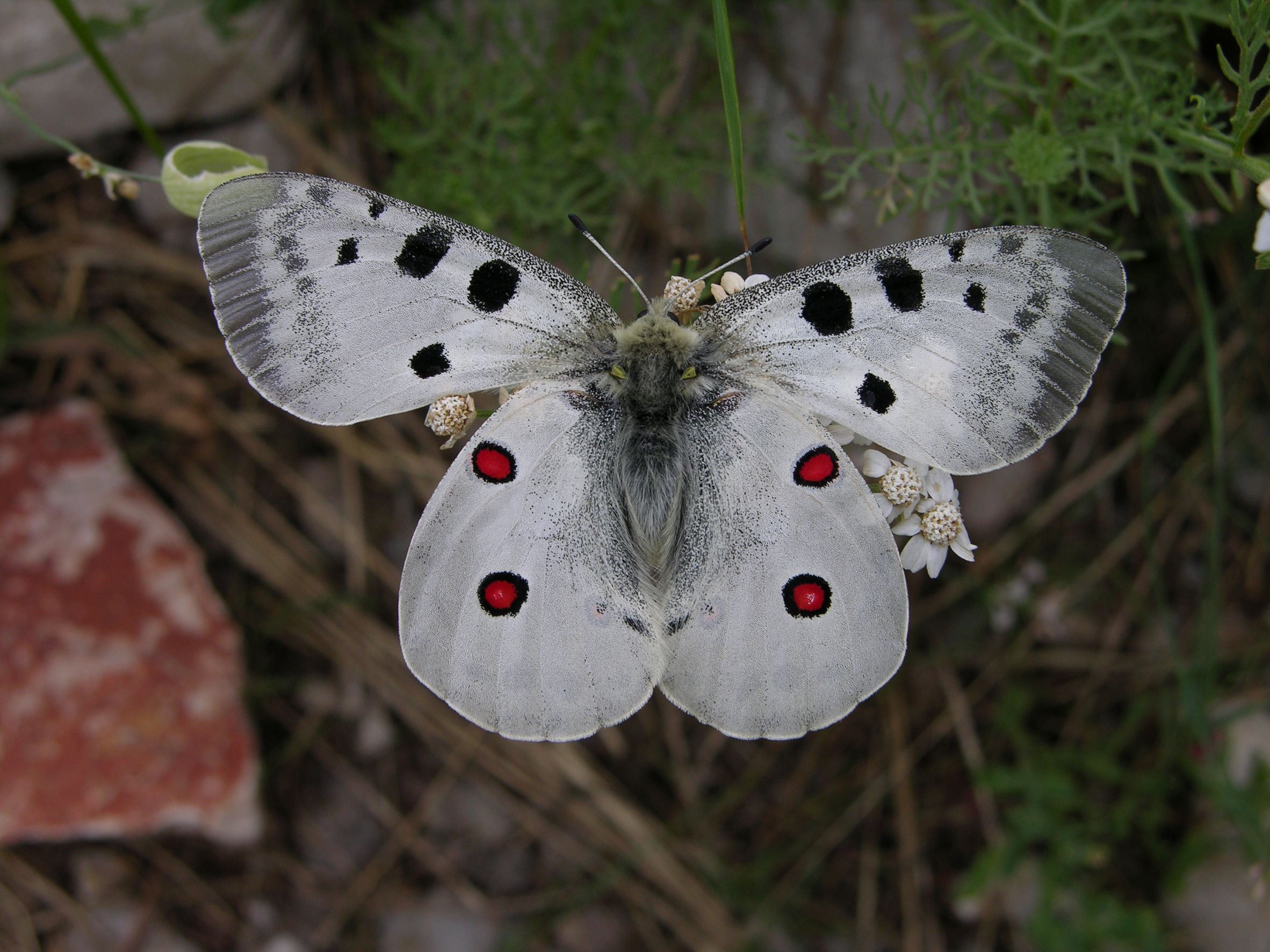
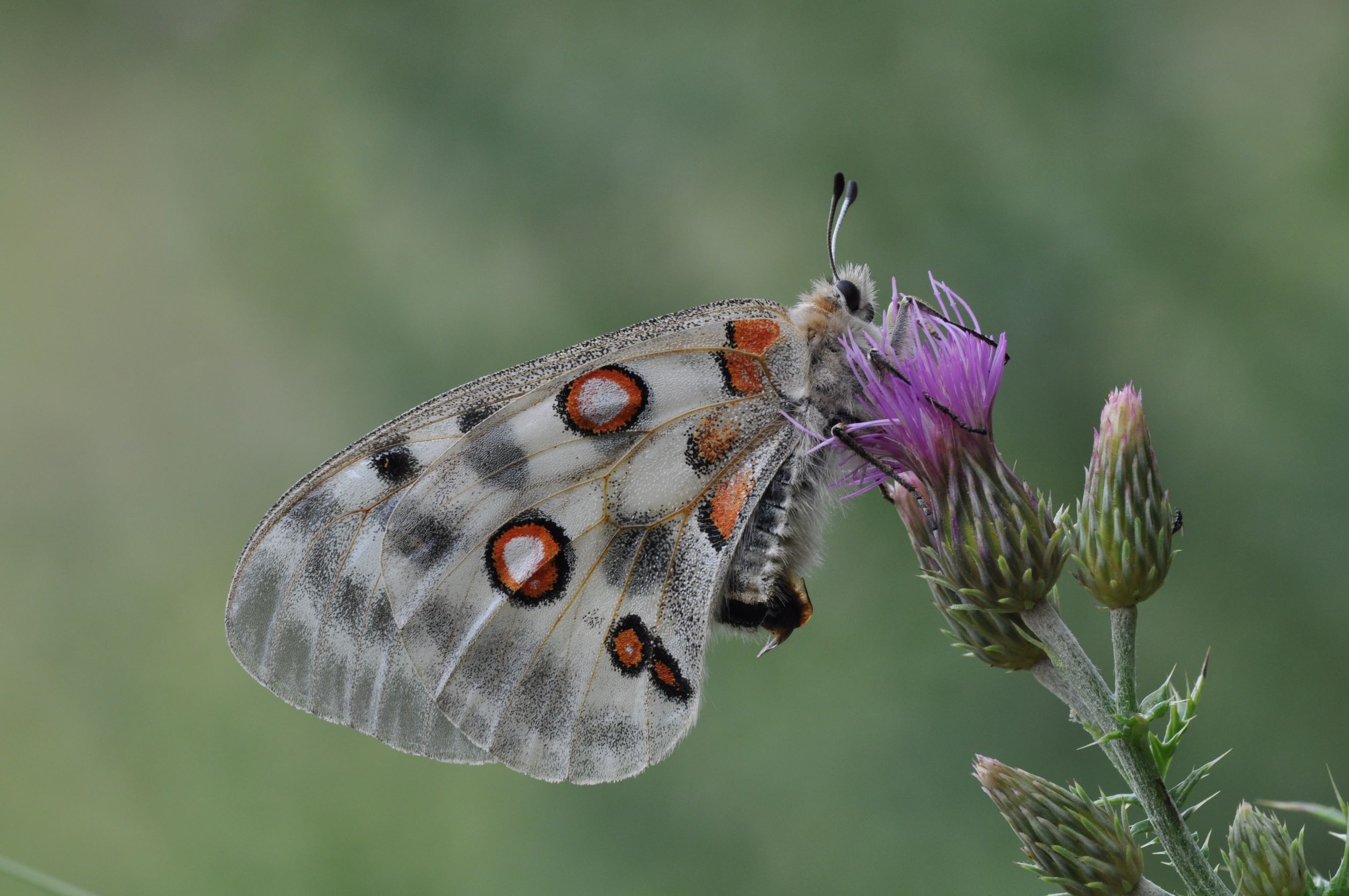 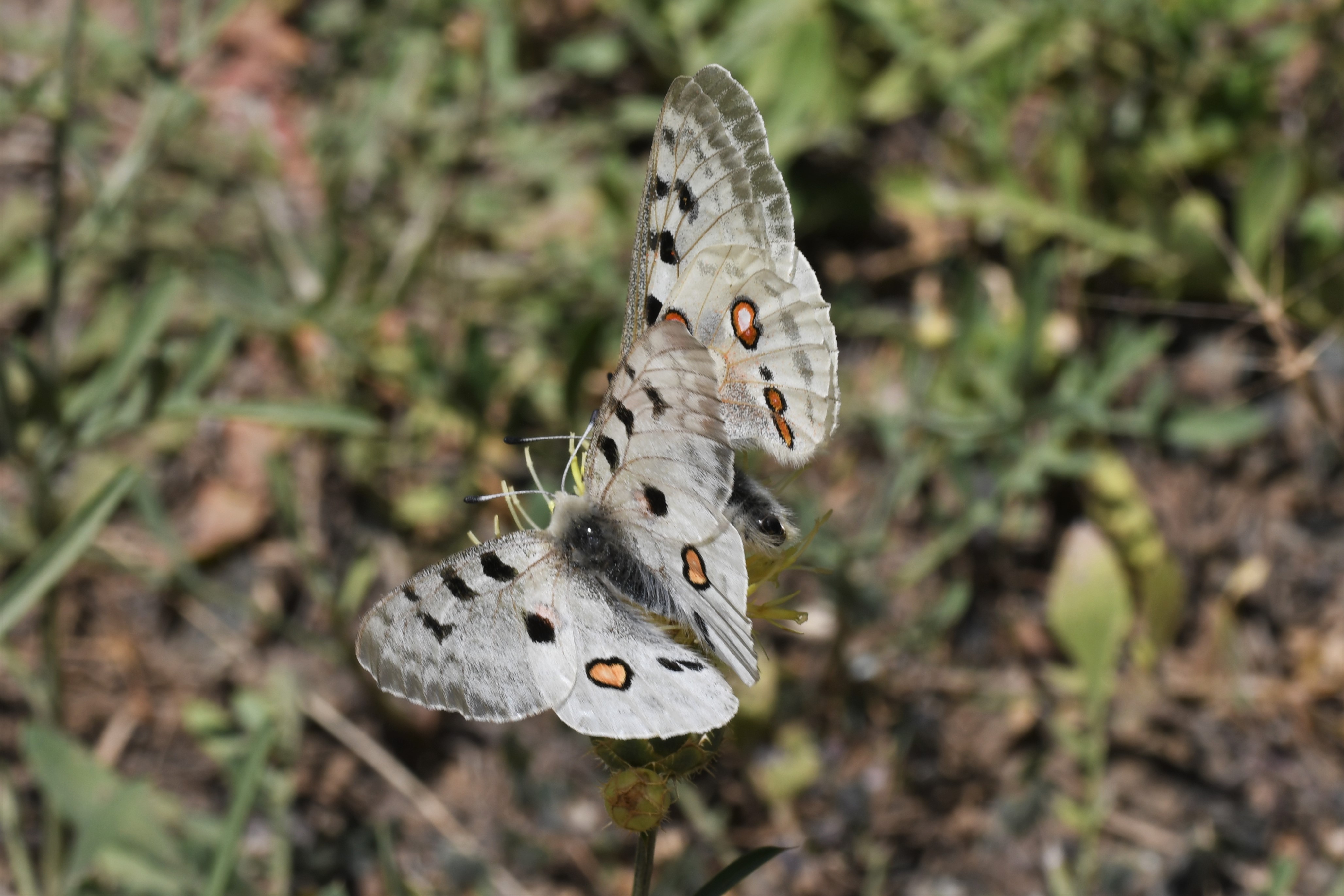
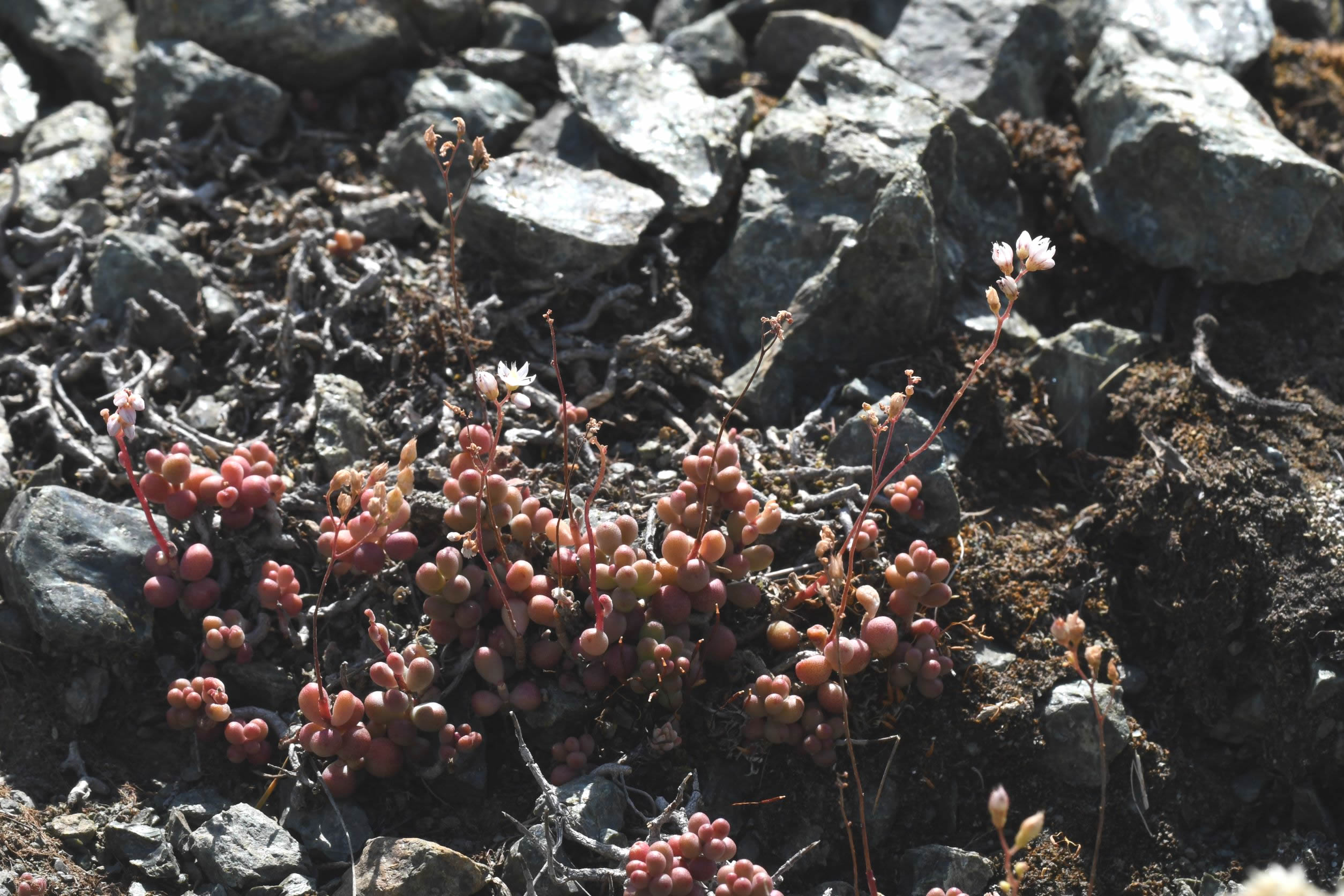 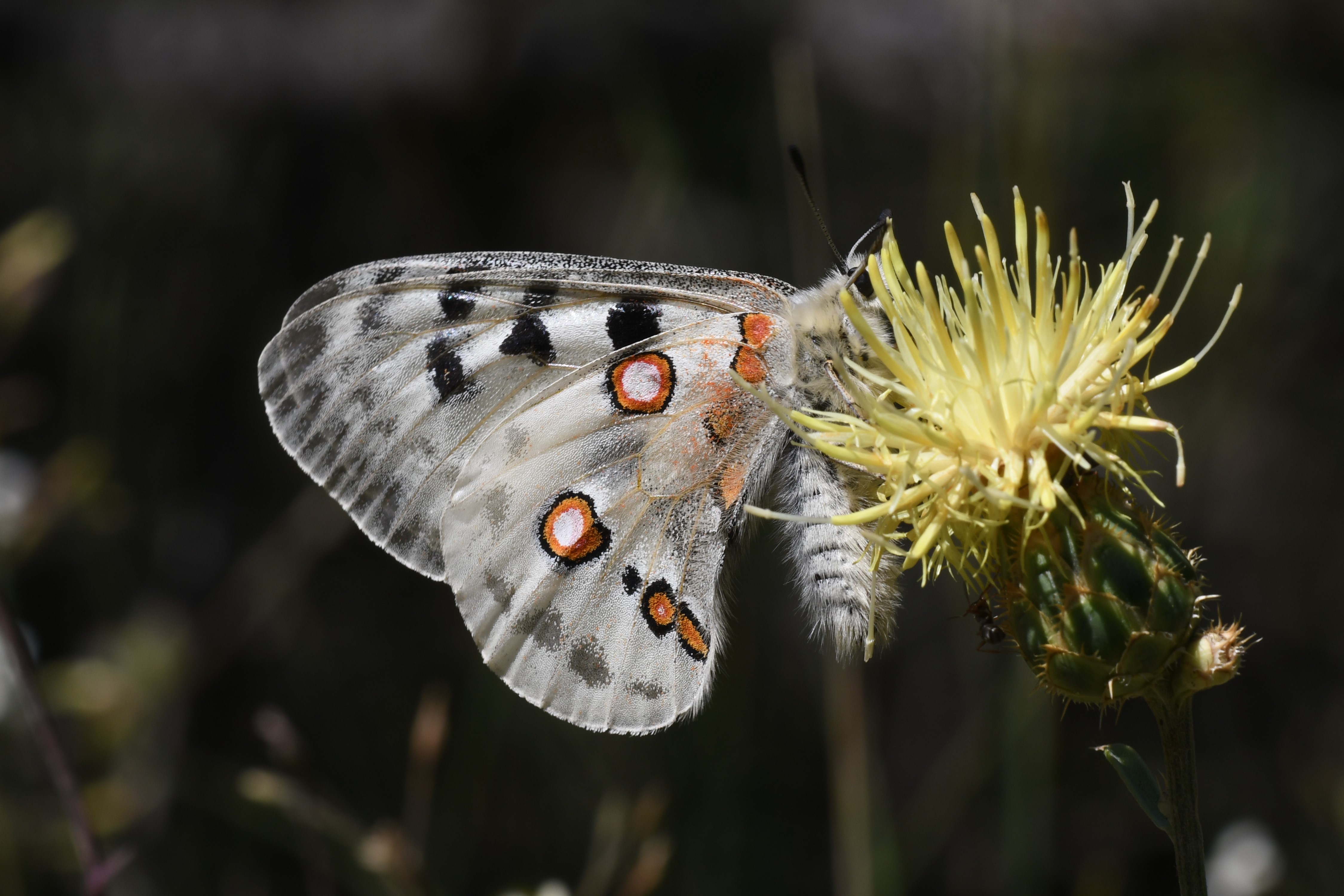
1a. Parnassius apollo, distribution map (09.i.2025).  Historical data ; Historical data ;  Additional data from the 2018 update ; Additional data from the 2018 update ;  New observations since the 2018 update. New observations since the 2018 update.
1b. Parnassius apollo ♂. Deja Mt, Albania (© Lulëzim Shuka)
1c. Parnassius apollo ♀. Greece (© Sylvain Cuvelier)
1d. Parnassius apollo. Gjergjevicë, Albania (© Sylvain Cuvelier)
1e. Sedum album, 12.vii.2022. Boboshticë, Albania (© Sylvain Cuvelier)
1f. Parnassius apollo ♂. Gjergjevicë, Albania (© Sylvain Cuvelier)
Description
♂♂
Large butterfly. Fw: 35-42 mm.
Ups: white markings with black dots and red, ocellated spots.
Uns: similar.
♀♀
Similar, larger.
Abdomen with a sphragis.
Similar species
None.
Life cycle
Adults: one generation, life span: 2-3 weeks. The flight period, early June to the end of August, is variable and depends on the local altitude and climate conditions.
Egg: overwintering as a fully developed larva inside the egg, attached to any object.
Caterpillar: hatches in early spring, feeding for 10 weeks, black larva with bright orange and blue spots and armed with an osmaterium.
Pupa: 14-25 days.
Habitat
Parnassius apollo inhabits stony places with sparse vegetation from 700 up to 2200 m a.s.l.
Spatial requirement high, population density can be high.
Initially males are strongly bound to the habitat but later they behave as vagrants. Females have a more nomadic lifestyle.
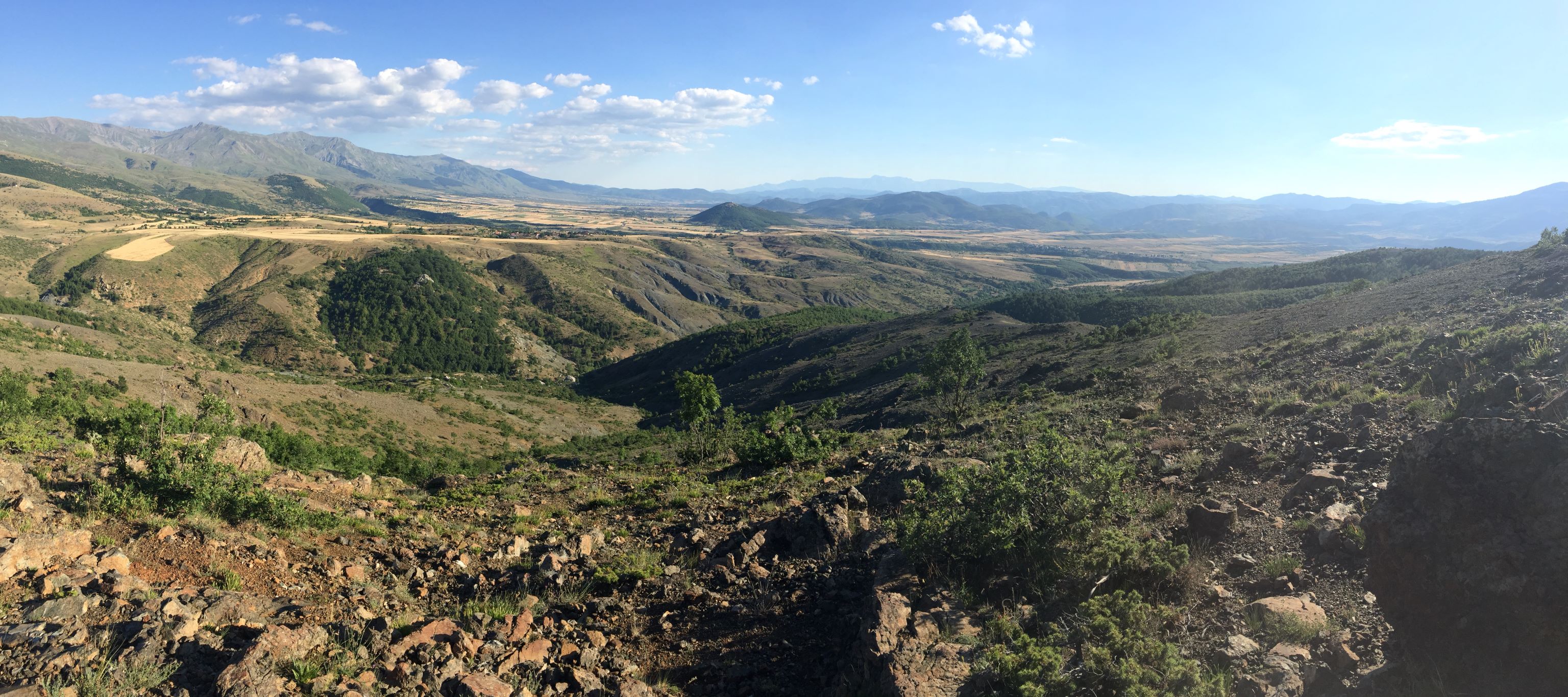
2. Habitat of Parnassius apollo. Shtikë, Albania (© Sylvain Cuvelier)
Foodplants
Caterpillars feed on Crassulaceae, often Sedum album, also mentioned are Sedum telephium maximum, Rhodiola rosea and Sempervivum sp.
Butterflies feed on all kinds of big flowers but also on its own host plant, white stonecrop.
Distribution
Albania: local.
Balkan: AL - BG - BIH - GR - HR - NMK - MNE - RKS - RO* - SLO - SRB
Europe: IB - IT - BAL - ALP - NWE - UK - SCA - EEU
Asia Minor, Near East, Transcaucasia, Caucasus and further east.
Conservation status
Parnassius apollo is not endangered in Albania.
Albanian Red List: NT.
UCN Red List, category at the Mediterranean level: LC.
Useful links
Bink 2015
Pyrgus.de
Lepiforum
Euroleps
|
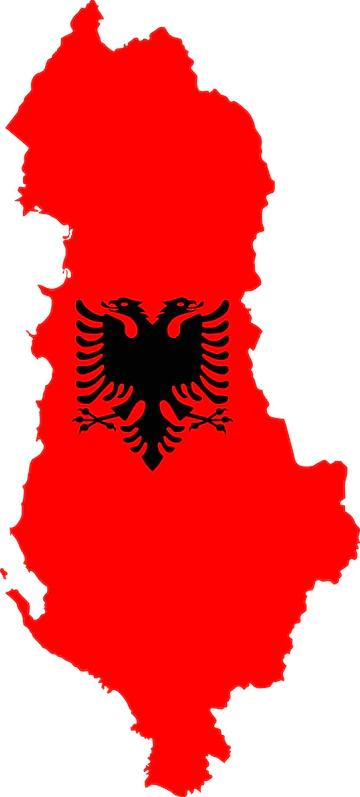 xx
xx 

 Historical data ;
Historical data ;  Additional data from the 2018 update ;
Additional data from the 2018 update ;  New observations since the 2018 update.
New observations since the 2018 update.